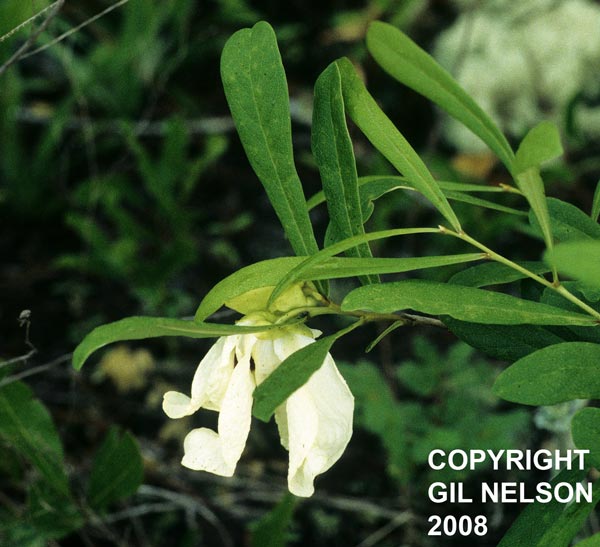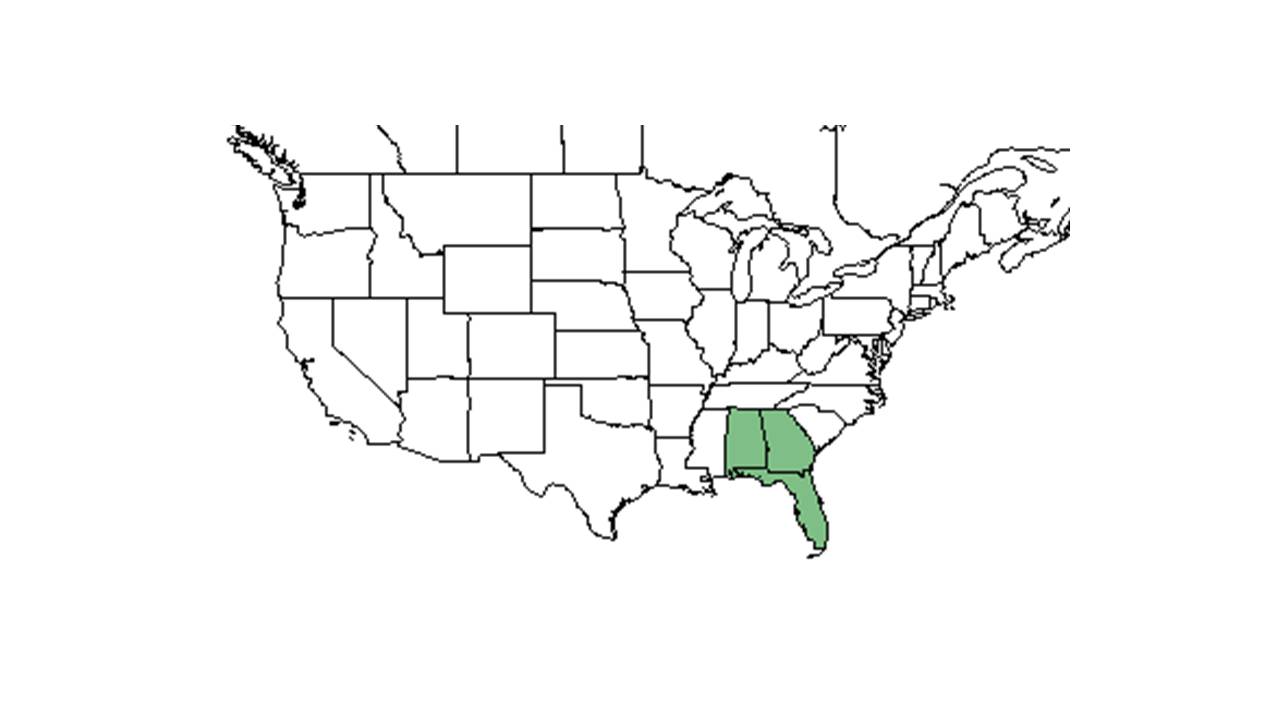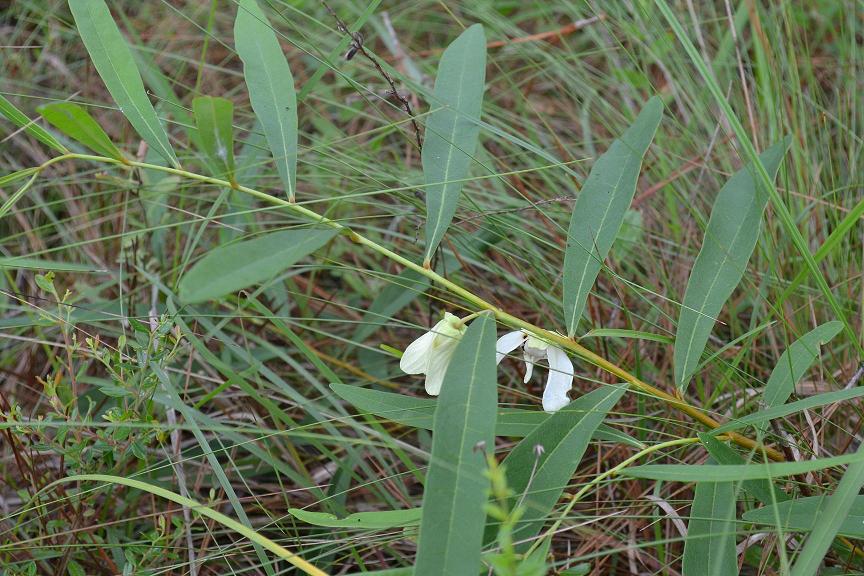Difference between revisions of "Asimina angustifolia"
| Line 27: | Line 27: | ||
==Ecology== | ==Ecology== | ||
===Habitat=== <!--Natural communities, human disturbed habitats, topography, hydrology, soils, light, fire regime requirements for removal of competition, etc.--> | ===Habitat=== <!--Natural communities, human disturbed habitats, topography, hydrology, soils, light, fire regime requirements for removal of competition, etc.--> | ||
| + | |||
Growing in what was previously upland sandhill longleaf pine- wiregrass ecosystem. <ref name="Heuberger et al 2003">Heuberger, K. A. and F. E. Putz (2003). "Fire in the suburbs: ecological impacts of prescribed fire in small remnants of longleaf pine (Pinus palustris) sandhill." Restoration Ecology 11: 72-81.</ref> In Heuberger’s study, they observed Asiminia in burned and in unburned patches. | Growing in what was previously upland sandhill longleaf pine- wiregrass ecosystem. <ref name="Heuberger et al 2003">Heuberger, K. A. and F. E. Putz (2003). "Fire in the suburbs: ecological impacts of prescribed fire in small remnants of longleaf pine (Pinus palustris) sandhill." Restoration Ecology 11: 72-81.</ref> In Heuberger’s study, they observed Asiminia in burned and in unburned patches. | ||
| − | Frequently burned longleaf pine-wiregrass uplands (Ultisols) and longleaf wiregrass sandhills (Entisols) in north Florida and southern Georgia. ''Asimina angustifolia'' is predominately in the native groundcover with a statistical affinity in upland pinelands of South Georgia (Ostertag and Robertson 2007). Found in dry pinelands (Weakley 2015) and sandhills, flatwoods, and scrub habitats (Wunderlin and Hansen 2011). | + | Frequently burned longleaf pine-wiregrass uplands (Ultisols) and longleaf wiregrass sandhills (Entisols) in north Florida and southern Georgia. ''Asimina angustifolia'' is predominately in the native groundcover with a statistical affinity in upland pinelands of South Georgia (Ostertag and Robertson 2007). Found in dry, well drained pinelands (Weakley 2015) and sandhills, flatwoods, and scrub habitats (Wunderlin and Hansen 2011, FSU Herbarium). |
===Phenology=== <!--Timing off flowering, fruiting, seed dispersal, and environmental triggers. Cite PanFlora website if appropriate: http://www.gilnelson.com/PanFlora/ --> | ===Phenology=== <!--Timing off flowering, fruiting, seed dispersal, and environmental triggers. Cite PanFlora website if appropriate: http://www.gilnelson.com/PanFlora/ --> | ||
Revision as of 12:31, 9 July 2015
| Asimina angustifolia | |
|---|---|

| |
| photo by Gil Nelson | |
| Scientific classification | |
| Kingdom: | Plantae |
| Division: | Magnoliophyta - Flowering plants |
| Class: | Magnoliopsida - Dicotyledons |
| Order: | Magnoliales |
| Family: | Annonaceae |
| Genus: | Asimina |
| Species: | A. angustifolia |
| Binomial name | |
| Asimina angustifolia Raf. | |

| |
| Natural range of Asimina angustifolia from USDA NRCS Plants Database. | |
Contents
Description
Common Name: Slimleaf Pawpaw
Synonym names: A. longifolia Kral var. longifolia; Pityothamnus angustifolius (Raf.) Small
Distribution
Found in southeastern Georgia to central peninsular of Florida to the west towards the Suwannee River (Weakley 2015).
Ecology
Habitat
Growing in what was previously upland sandhill longleaf pine- wiregrass ecosystem. [1] In Heuberger’s study, they observed Asiminia in burned and in unburned patches. Frequently burned longleaf pine-wiregrass uplands (Ultisols) and longleaf wiregrass sandhills (Entisols) in north Florida and southern Georgia. Asimina angustifolia is predominately in the native groundcover with a statistical affinity in upland pinelands of South Georgia (Ostertag and Robertson 2007). Found in dry, well drained pinelands (Weakley 2015) and sandhills, flatwoods, and scrub habitats (Wunderlin and Hansen 2011, FSU Herbarium).
Phenology
Flowers from spring to summer (Wunderlin and Hansen 2011).
Seed dispersal
Seed bank and germination
Fire ecology
Resprouts and flowers within two months of burning. KMR
Pollination
Use by animals
Diseases and parasites
Conservation and Management
Requires frequent fire and protection from soil disturbance.
Cultivation and restoration
Photo Gallery
References and notes
Ostertag, T.E., and K.M. Robertson. 2007. A comparison of native versus old-field vegetation in upland pinelands managed with frequent fire, South Georgia, USA. Pages 109–120 in R.E. Masters and K.E.M. Galley (eds.). Proceedings of the 23rd Tall Timbers Fire Ecology Conference: Fire in Grassland and Shrubland Ecosystems.
Weakley, Alan S. Flora of the Southern and Mid-Atlantic States: Working Draft of 21 May 2015. University of North Carolina Herbarium (NCU). PDF. 134.
Wunderlin, Richard P. and Bruce F. Hansen. Guide to the Vascular Plants of Florida. Third edition. 2011. University Press of Florida: Gainesville/Tallahassee/Tampa/Boca Raton/Pensacola/Orlando/Miami/Jacksonville/Ft. Myers. 258. Print.
- ↑ Heuberger, K. A. and F. E. Putz (2003). "Fire in the suburbs: ecological impacts of prescribed fire in small remnants of longleaf pine (Pinus palustris) sandhill." Restoration Ecology 11: 72-81.
